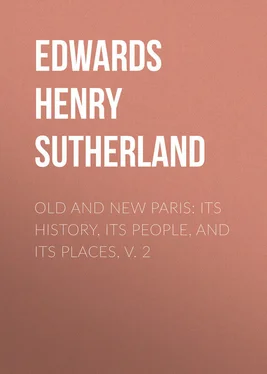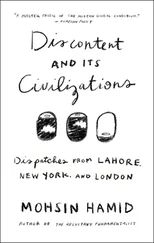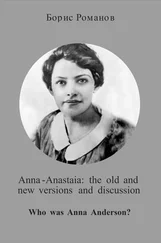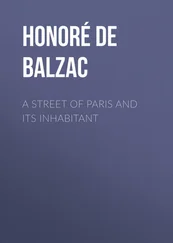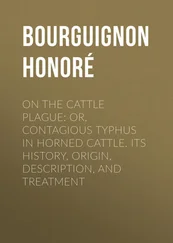Henry Edwards - Old and New Paris - Its History, Its People, and Its Places, v. 2
Здесь есть возможность читать онлайн «Henry Edwards - Old and New Paris - Its History, Its People, and Its Places, v. 2» — ознакомительный отрывок электронной книги совершенно бесплатно, а после прочтения отрывка купить полную версию. В некоторых случаях можно слушать аудио, скачать через торрент в формате fb2 и присутствует краткое содержание. Жанр: foreign_antique, foreign_prose, Путешествия и география, на английском языке. Описание произведения, (предисловие) а так же отзывы посетителей доступны на портале библиотеки ЛибКат.
- Название:Old and New Paris: Its History, Its People, and Its Places, v. 2
- Автор:
- Жанр:
- Год:неизвестен
- ISBN:нет данных
- Рейтинг книги:4 / 5. Голосов: 1
-
Избранное:Добавить в избранное
- Отзывы:
-
Ваша оценка:
- 80
- 1
- 2
- 3
- 4
- 5
Old and New Paris: Its History, Its People, and Its Places, v. 2: краткое содержание, описание и аннотация
Предлагаем к чтению аннотацию, описание, краткое содержание или предисловие (зависит от того, что написал сам автор книги «Old and New Paris: Its History, Its People, and Its Places, v. 2»). Если вы не нашли необходимую информацию о книге — напишите в комментариях, мы постараемся отыскать её.
Old and New Paris: Its History, Its People, and Its Places, v. 2 — читать онлайн ознакомительный отрывок
Ниже представлен текст книги, разбитый по страницам. Система сохранения места последней прочитанной страницы, позволяет с удобством читать онлайн бесплатно книгу «Old and New Paris: Its History, Its People, and Its Places, v. 2», без необходимости каждый раз заново искать на чём Вы остановились. Поставьте закладку, и сможете в любой момент перейти на страницу, на которой закончили чтение.
Интервал:
Закладка:
By the side of the ancient palace of the Roman emperors the Hôtel Cluny seems quite young, and we shall doubtless be more at our ease in an edifice which is not yet four hundred years old. When, in the fourteenth century, Pierre de Chalus bought the Palais des Thermes and the land surrounding it, he intended to construct, near the college of his order, a residence which might afford lodging to abbés of Cluny when they were making their frequent visits to Paris. This project does not seem to have been carried into execution; and it was under Charles VIII. that one of the successors of Pierre de Chalus, Jean de Bourbon, founded the building so much admired in the present day. He was not, however, destined to complete it; the Hôtel Cluny, after many delays, was terminated towards the end of the reign of Charles VIII. by Jacques d’Amboise, Abbé of Jumièges, and Bishop of Clermont, one of whose brothers was the famous minister of Louis XII., while the other was grand-master of the order of Saint John of Jerusalem. All the members of this family seem to get animated by the spirit of the time. Jacques d’Amboise – man of letters, collector, and, in his way, an artist – was one of the moving spirits of the French Renascence. The Hôtel Cluny belongs, indeed, to that ancient time when art becomes softer and more graceful without losing altogether the severity of the past.
The former residence of Jacques d’Amboise is enclosed on the side of the Rue des Mathurins by a high crenelated wall. In the interior the different apartments have lost very little of their original character, but modifications have of necessity been made; and as the museum needs light the number of the windows has been increased. The chapel retains in all respects its primitive style. The picture of the two Marys weeping over the dead Christ dates from the end of the reign of Louis XII. Of the glass windows which at the time of Jacques d’Amboise adorned the chapel, one alone has remained intact – that in which the Bearing of the Cross is represented. Little enough, then, survives of the past in this building, which has sheltered, one after the other, so many different inmates, some of them sufficiently careless about matters of art. The Hôtel Cluny has been inhabited by Marie of England, widow of Louis XII., by James V., King of Scotland, by Cardinal de Lorraine, and the Duke of Guise; here, under Henry III., the Italian actors represented their pastoral love scenes. Towards the end of the eighteenth century Moutard the printer occupied the principal apartments; and a member of the Academy of Sciences, Messier, had installed above the chapel a sort of observatory. After the Revolution the hôtel passed from hand to hand, and it would perhaps have disappeared, to give place to a modern house, when a member of the Court of Accounts, M. Alexandre du Sammerard, bought, in 1833, the former residence of the Abbés de Cluny, in order to place within its walls archæological curiosities, precious furniture, and mediæval objects of art which he had made it his pleasure to collect. At his death, nine years later, the Chamber of Deputies passed, on the report of François Arrago, a resolution authorising the Government to buy in the name of the State M. de Sammerard’s collections and the edifice which held them. A credit of five hundred thousand francs having been voted for this double acquisition, the Musée des Thermes et de l’Hôtel Cluny was founded in virtue of the law of 24th July, 1843.
Since then the collection has been considerably increased, partly through liberal donations from private persons, partly through excavations undertaken by the State. The catalogue of the museum registers nearly four thousand objects of art. One of the most interesting of these is the altar-piece of the Chapel of Saint-Germer – unhappily much mutilated – in which the chisel of a master of the thirteenth century has represented the Passion of Christ and the legendary adventures of the holy patron of the Church. The heads of all the personages have been broken; the colour and the gilding which covered their vestments have partly disappeared; but in what remains of the altar-piece one sees attitudes which are full of character, and is impressed by a certain simplicity which approaches grandeur. There is more emotion in the statuettes detached from the tomb of the Duke of Burgundy at the Chartreuse of Dijon. These figures of marble date from the last days of the fourteenth century, and represent the servants of the duke, with writers and chaplains attached to his household. Monks are seen weeping beneath the hood which covers their face. The uncovered faces, full of life and expression, are evidently portraits. Close by, the spirit and grace of the Renascence may be seen in several admirable specimens: such as the Venus, partly broken, which is attributed, with more or less reason, to Jean Cousin, and the sleeping statuette of a naked woman whose head seems lost in a dream. The delicate style of the sculpture seems to reveal an Italian hand. Less perfect in execution, but equally interesting, is that Ariadne which, by a strange coincidence, was found in the Loire opposite that Château of Chaumont where another woman in despair, Diana of Poitiers, had been shut up by Catherine de Médicis after the death of Henry II. It is the same Diana, this time accompanied by her two daughters, which tradition recognises in the statue attributed to Germain Pilon.
The ivories of the Hôtel Cluny are among its greatest treasures. In this collection ivory work of every period and in every style may be found. The mysterious statuette of a woman crowned by two genii dates from the fourth century. It was discovered in a tomb on the borders of the Rhine. This statuette is surrounded by a number of marbles representing divinities of various kinds, and is classed, therefore, with the works styled Pantheistic. In one hand this strange figure holds a sceptre bursting into blossom; in the other an oval vase. The style recalls at once classical art and the art of Byzantium. By the side of the ancient statuette is a less ancient bas-relief, representing the marriage of the Princess Theophania with Otho II., who was Emperor of the West from 973 to 983. Here we see the art of the lower Empire: an art of stiff symmetrical forms, but full of barbaric richness. Of the same period, or nearly so, is “The Virgin holding the Infant Jesus on her knees”: a solemn hieratic group. To the eleventh century belongs the cross of Saint Anthony, found in the tomb of Morard, Abbé of Saint-Germain-des-Prés. Another work of the highest value is the shrine of Saint Yved (twelfth century), from the Abbey of Braisne. This reliquary, in the form of a rectangular casket, is decorated on all sides with figures in relief of elaborate workmanship. Of the same epoch, or still earlier, are the sheets of ivory used for the binding of the Gospels, on which are painted admirable pictures in illustration of the Divine books. The ivory looking-glass frame, representing two figures, which are supposed to be those of Saint Louis and of Blanche de Castille, comes from the treasure of Saint Denis. The pastoral staff which, twice ennobled, belonged, first to the famous Debruges-Dumesnil collection, and afterwards to the collection of Prince Soltykoff, dates from the thirteenth century. The rod of ivory is crowned with a lion in boxwood, enriched with precious stones.
The little monument known as the “oratory of the Duchess of Burgundy” is an ivory on which are related, by means of numerous figures, here the history of Jesus Christ, there that of John the Baptist. It comes from the Chartreuse of Dijon; and by the memoirs of Philippe le Hardi, it would seem that the author was a certain Berthelot.
Eight crowns of massive gold, enriched with pearls and precious stones, were one day dug from the earth at Guarazzar in the neighbourhood of Toledo. They were followed soon afterwards by another crown, belonging evidently to the same hidden treasure. Until then it was scarcely suspected that the Visigoth kings knew what gold-work meant. One of the crowns, however, purchased for the Cluny Museum, bears the words: “Reccesvinthus rex offeret.” Reccesvinthus reigned in Spain from 653 to 672. On a second crown may be read, in characters struck with the hammer, the name, not yet explained, of Sonnica. The other crowns bear no inscription. Archaeologists are unable to decide whether the largest of these crowns was ever worn. But the one inscribed with the name of Reccesvinthus was used, it is held, at the coronation of that king by the Bishop of Toledo. They were, however, offered to the Virgin, and suspended in one of the chapels consecrated to her. The supposition is entertained that at the time of the Arab invasion these precious offerings of the Visigoth king were buried by the Christians. They came to light centuries afterwards, to tell of the magnificence of these almost legendary sovereigns, and of the skill possessed by their artificers for moulding and cutting gold in every style, besides enriching it with incrustations of sapphires and pearls. The gold altar given by the Emperor Henry III. to the Cathedral of Bâle at the beginning of the eleventh century is another rare and remarkable work. The character of the design, and what is known as to the origin of the monument, have caused it to be attributed to Lombard artists. From the treasury of the same church comes the Golden Rose, given to the Bishop of Bâle by Pope Clement V. at the beginning of the fourteenth century.
Читать дальшеИнтервал:
Закладка:
Похожие книги на «Old and New Paris: Its History, Its People, and Its Places, v. 2»
Представляем Вашему вниманию похожие книги на «Old and New Paris: Its History, Its People, and Its Places, v. 2» списком для выбора. Мы отобрали схожую по названию и смыслу литературу в надежде предоставить читателям больше вариантов отыскать новые, интересные, ещё непрочитанные произведения.
Обсуждение, отзывы о книге «Old and New Paris: Its History, Its People, and Its Places, v. 2» и просто собственные мнения читателей. Оставьте ваши комментарии, напишите, что Вы думаете о произведении, его смысле или главных героях. Укажите что конкретно понравилось, а что нет, и почему Вы так считаете.
